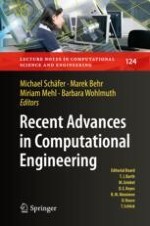This book comprises the proceedings of the 4th International Conference on Computational Engineering (ICCE 2017), held in Darmstadt, Germany on September 28-29, 2017. The conference is intended to provide an interdisciplinary meeting place for researchers and practitioners working on computational methods in all disciplines of engineering, applied mathematics and computer science. The aims of the conference are to discuss the state of the art in this challenging field, exchange experiences, develop promising perspectives for future research and initiate further cooperation.
Computational Engineering is a modern and multidisciplinary science for computer-based modeling, simulation, analysis, and optimization of complex engineering applications and natural phenomena. The book contains an overview of selected approaches from numerics and optimization of Partial Differential Equations as well as uncertainty quantification techniques, typically in multiphysics environments. Where possible, application cases from engineering are integrated.
The book will be of interest to researchers and practitioners of Computational Engineering, Applied Mathematics, Engineering Sciences and Computer Science.
